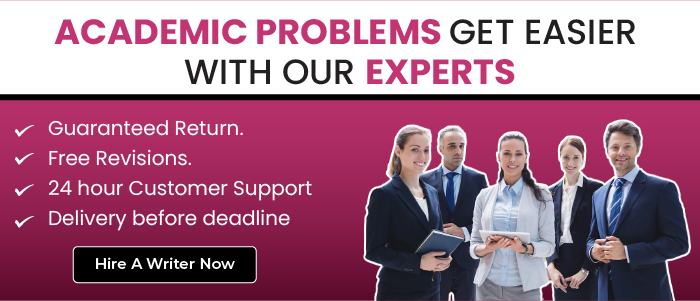This sample will let you know about:
- Introduction of Macro Environment
- Influence of macro environment
- Analyse the internal environment and capabilities
- Explaining the McKinsey’s 7S model
INTRODUCTION
Business strategy refers to the plan of working structure that is made by the management of the organization in order to achieve its vision and prioritize objectives. This will assist the firm in competing successfully with other rival firms by considering financial performance within the business model (Acquaah, 2013). There are basically three basic business strategies that provide better results and outcomes. Sainsbury is the company which is taken in this assignment and it comes under second largest chain of supermarket in the United Kingdom. It constitutes around 16 percent of shares in the sector of the supermarket. This assignment will focus on the impact and influence which the macro environment can have on the organization and its business strategies. Other than this, the company's internal environment and its capabilities are also mentioned in this report. In addition to this, evaluation and application of outcomes will be included which will be done using Porter's Five Forces. Lastly, the application of different models, theories, and concepts was included in this assignment.
TASK 1
P1 Frameworks for analysing impact and influence of macro environment
Sainsbury is a UK based company which expand their business in Retail, Banking, and Financial services. It was founded in the year 1869 by James Sainsbury and soon the company engage itself in Food, clothing, merchandise, and financial sectors. It's headquarter is in London UK, which is divided in into 3 namely, Sainsbury's super market Ltd, Sainsbury's bank and Sainsbury Argos. The company is exploring under 181,900 employees.
PESTAL analysis of Sainsbury's
Political factor
As the company is based in UK and Ireland therefore their public presentation is extremely influenced by its political approaches in this state. While spreading into globalization the company is facing challenges and getting enormous chances (Astrachan, 2010). The corporation revenue enhancement is at 28% unlike a few old ages ago when it was 30 %. This indicates that company along with other administrations would recover an immense amount of money because of this lower rate of corporation revenue enhancement. In UK, the rate of debts on government and consumer is very high which has a direct influence on the attitudes of the customer on the business conditions which experience a great pressure. For example - Increase or decrease in tax by government could be one example which affect the company. Sainsbury in UK are expanding their business where political factors are in favor because of 28% of revenue enhancement which is better than 30% which was before.
Economic Factors
The rising in fuels cost has a direct economical factor that might be impacting Sainsbury. The global nutrient crisis which is ongoing would chasing in Sainsbury 's holding to increase the cost of their merchandise. The demand for company's products decreases because of the increasing price in food products and rampant unemployment that lead to decrease in the production of food products (Auzair, 2011). For example - Sainsbury will be affected by interest rates, exchange rates, inflation, taxes, demand or supply and recession.
Social factor
The increasing societal tendency in healthier nutrients is a great chance for the company as they are balancing and fulfilling the orders from the clients If clients are unhappy with the services provided by one retail merchant, they have a immense scope of one of the retail merchants that can can explore, therefore company should train their staff to be close and friendly and more helpful towards their clients so that they can drive more revenues and extent more clients who are based on the services of their employees provide. Example - Sainsbury has trained their staff to be with good behavior with their clients cause when they make their clients satisfied and happy by their behavior, ultimately the revenue will come in favor of the company.
Technological
The right usage and right technique will be applied with retail merchants. Being a large retail seller, there are many things which are merely not possible to be done manually (Azar, 2011). The online shopping installation is beside a great technological advantage for Sainsbury. For example - As sainsbury is a global company which is providing their products globally need the help of technology which make the staffs of the company work easier. Because it's not possible for the company to work manually and satisfied their customers within time.
Submit Your Requirements NowEnvironmental
To act in socially responsible way and to keep the environment healthy and safe should be the prime motive of any organizations as sainsbury proved itself a socially responsible company by introducing 'Reduce, Reuse, Recycle, approach that will be satisfying in managing waste, recycling and packaging. For example - Sainsbury has taken part in the movement to protect environment by reducing, recycling, approach that will be satisfying in managing waste, and packing (Barberá and et. al., 2012).
Legal
Sainsbury's is luckily bounded by many legal issues such as the national minimal pay policy, intoxicant merchandising age statue laws, favoritism and just intervention statue law-etc. For example - Sainsbury has been influenced by various laws as made by the government of UK are Health and safety laws, food hygiene, manual handling, employment laws etc are some of laws which company follows.
SWOT ANALYSIS OF SAINSBURY
Sainsbury is retail brand with a worldwide market based in UK with interests in grocery retailing and retail banking. The company's own a network of around 2,000 food suppliers and over 1,000 non food suppliers.
STRENGTHS
The company is expanding its power by spreading their business in all directions in which small grocery stores which allocate in the limited range of products the brand expanded to convinces stores which later will transformed supermarkets which deals deals with a number of merchandise categories that catered to day to day needs of the customer (Bharadwaj and et. al., 2013). Another is business philosophy which helps customers to live well at less. By following and sustaining a low cost strategy across all its products categories , company has been able to attract and retain customers from all income segments many of who are brand loyal and depend on the retailer. Wholesale and marketing, innovative promotions strategies and coupons are some ideas behind their strength.
WEAKNESSES
Weakness is something which are referred in which the business or brand needs improvement. Brand switching is considered as one of the risk which Saisbury has also faced like other retail brands. company still finds it difficult and challenging to retain customers in spite of string loyalty programs and promotions. Low margins, growing costs are some of weaknesses of the company. The retailer also needs to spend on the shopping experience which is a key variables especially for higher income segments (Burlton, 2010).
OPPORTUNITIES
It refers to those path in the environment that surrounds the business on which it can capitalize to increase its returns. For example - growth in village because that days are gone when villagers are not using branded products. Because branded products across all daily use categories are must even in villages. This has concluded a vast growth hint of the supermarket culture even in villages which is an opportunity for all retailers (Bharadwaj and et. al., 2013).
THREATS
It is the factors in the environment which can be determined by mental growth of the business. Tough competition is one of the main threat because the competitors are Resco, Aldi, Lidl, and Asda. Where as the impact of Brexit on prices are one of the important factor in threat. But the main threat remains intense competition in grocery and retail segment.
The company require to analyze both external as well as internal environmental factors which directly impact on company strategic decision making in effective manner. SWOT analysis help in identifying internal factors which occurs in the market place it is effect on business operation and functions. On the other hand, the firm required to analyze whole market according to this, they need to make decision for the welfare of their customers (Campbell, Edgar and Stonehouse, 2011).
TASK 2
P2 Analyse the internal environment and capabilities using appropriate frameworks
An organisation capabilities refers to a way when system and people work together. A company's culture is defined by how management adopts the particular talent, collaboration and mindset. Competencies like social and technical interact each-other in different ways. The VRIO framework is a strategic tool analysis which has implemented to help and protect organisation capabilities and resources from the long-term competitive advantage (Chang and Chuang, 2011). In context with Sainsbury, this framework is required for the evaluation of the company's resources and competitive advantage. This framework is explained as under:
VRIO analysis is a best suitable technique for the evaluation of company's resources and their competitive advantage. It stands for Value, Rareness, imitability and organisation. This framework was developed as a way of evaluating resources in an organisation. These resources include: Financial, human, material and non-material resources. In Sense Berry, it will enhance company's productivity and long term growth for surviving in the competition. The analysis of VRIO model framework is given:
(Source: Sustainable Operations & Triple Bottom Line for Business Growth, 2018)
Value
In Sense Berry, availability of the resources can reduce or eliminate the threat's impact. Generally, stakeholders ascertain value of the company by analysing resources which are beneficial to the company. The resources would help company in different area such as political, economic, social and technological. If resources helps in any of the area, it could be helpful for the company to grow and achieve success. It may be a problem for the company for not getting any benefit from available resources (Cinquini and Tenucci, 2010).
Rarity
Competition depends on how an organisation manage availability of their resources. If resources are rare, it is a major strength for the company to handle their rivalries. There is a need to protect rareness of resources and if resources are scarce, how it is easy for the company to get access to the resources again and again. In context with Sense Berry, company needs to manage the flow and availability of the resources, even in case of scarcity also to maintain productivity and growth of an organisation. If you are worried about HND Assignment Help in the UK. Contact our expert writers.
Imitability
It is difficult and rare to assume availability of resources, internal environment and capabilities of an organisation. This is a competitive advantage in itself. It basically depend on the company whether to use the resources, capabilities and create business opportunities or to nullify effects of threat. In context with Sense berry, company is looking for using their internal capabilities and resources to take advantage of the competition. Resource need to be more than rare and must not be imitable (Elliot, 2011).
Organization
This is the last step of VRIO framework. It requires determination of value, rarity and imitability first. If the capabilities and resource has passed through all these requirement, in that case company has said to be organised. Company's department would analyse to ensure that departments are ready to use resources to full advantage and competition.
McKinsey's 7S model as a management tool
McKinsey 7S model is a tool that analyses company's structure, design, strength and weakness. 7s includes strategy, structure, systems, shared values, style, staff and skills. In McKinsey model, the seven areas of company are divided into 'soft' to 'hard'. Strategy, systems and structure are hard elements and style, staff, skills and shared values are soft elements (Ghezzi, 2013).
(Source: McKinsey 7s Model, 2018)
Strategy
It is a plan developed by a company to attain sustained competitive advantage and success in the market. In context with Sense Berry, perfect strategy is one that is clearly jointed, which helps to achieve competitive advantage and rebuild vision, mission and values of the company. Structure is a organisational chart of the firm.
System
These are the procedures and processes of the company, which shows business related activities and to look decision making process. These are the domains of the which determines how business has done till now and future scope of it. In context with Sense Berry, manager should focus on the organisational change and restructure (Jocovic and et. al., 2014).
Structure
It represents how business units and division are organised. It is an organisational chart of the firm. In context with Sense Berry, it is one of the most easy and viable to change element of the frameworks.
Skills
These are the traits and abilities that every employee need to be pursue in order to survive in the job and work. It also involves capabilities and competencies. In context with Sense Berry, it is mandatory to judge and analyse the skills, competencies and abilities of an individual before organisational change.
Read also:
Personal and Professional Skills
Staff
In Sense Berry, it is basically concerned with how many and what type of employees an organisation would need and how these employee will be recruited, motivated, trained and rewarded by the organisation (Meskendahl, 2010).
Style
It represents the way Sense berry is managed and controlled by top-level manager It tells that how they interacts, what actions they will take and what will be there vision and values about the company. In other words, this is the style how company leader's manage.
Shared values
This is the core of McKinsey 7s model. These are the standards, rules and norms that guide and motivates an employee behaviour and company mission and action. Thus, it consists as the foundation of every company.
TASK 3
P3 porter's five force model for evaluating competitive force
Porters Theory
Porters five forces of competitive position analysis were firstly developed by Michael E Porter of Harvard business school in 1979 as simple framework for assessing and evaluating the competitive strength and position of business organization. This theory is based on the concept were five forces that determine the competitive intensity and attractiveness of market. This theory helps to identify that where power lies in a business situation (Montgomery, 2011). This is useful for both in understanding the strength of an organization's current competitive position and the strength of a position that an organization may look to move into.
- Supplier power - This is driven by the number of suppliers of each essential input , uniqueness of their product or services, relative size and strength of the suppliers and cost of switching from one supplier to another. For example - when Sainsbury reduce the no. of suppliers then they can automatically raise the rate of product because when there will be less supplier and the demand is higher the prices of the product increases (Acquaah, 2013).
- Buyer power -it is considered as the number of buyers in the market,and their importance of each individual who is buying products from an organization and cost is the major issue through which they are switching towards other supplier. For example - If the customers of sainsbury need quality based product or they having any issue regarding the product quality so they can change or even they can create a competitive environment by moving for some other brand. This will force the company to fulfil their customers all requirements in proper manner.
- Competitive rivalry - The main driver is the number and capability of competitors in the market. Many competitors offers unique products and services which will increase the market attractiveness by variety of products. For example - Competitors can be active at anytime so sainsbury always keeps eye on their competitors because competitive companies gives challenges to other firms as to reinforce the company to come out with the uniqueness . They provide the variety of products to beat the competition (Astrachan, 2010).
- Threat of substitution - This is where close substitute products exist in a market, it increases the likelihood of customers while switching to alternatives in response to price increase. This reduces both the power suppliers and the attractiveness of the market. For example - Sainsbury need to come out time by time with the innovative and unique products which will stand on the trust of their customers. And if it happens then there will be no threat for the company to occupy the market and to decrease their target reach.
- Threat of new entry - It referred as the threat of new competitors who is ready to enter in existing competitors in an industry. Therefore a profitable industry will attract more competitors looking to achieve profits. For example - Sainsbury will always focus on the product uniqueness and the quality because there were several new brands are introducing day by day to beat the old one with their standard quality and uniqueness (Auzair, 2011).
Ansoff matrix
Ansoff matrix is instrument through which strategically planning can be done which gives the structure or framework that helps different workers,managers and marketers to implement their strategy for the future growth of the company. This concept was given by Igor Ansoff. There are four growth alternatives which are as follows.
Market penetration
It is the strategical measure through which the quantity of sales of a product and services is compared to the overall market of that particular product and service. In simple terms selling the existing product or services in the existing market through much more aggressive marketing and promotion, which can increase the sales of existing product in current market (Barberá and et. al., 2012). In Sainsbury's does apply this strategy in year 1998 with there existing product through different promotional technique and had achieved effective growth in that period of time.
Market development
It is a simple strategy in which a particular company or a firm tries to enlarge themselves in the fresh markets using their current products in different geographical and demographic condition. Sainsbury's have developed the multichannel retailer in 2016 and by reconstructing the structure they have made a chain through which the company had spread out in different regions of united kingdom and presently also it is working on spreading their supermarket business. Sainsbury's is generally targeting the different segment in the new areas and has been also keeping focus in the foreign markets.
Product development
The process of development in which the company tries to develop the new product and to update the services in the current market to achieve the higher growth in the reasonable amount of time (Cinquini and Tenucci, 2010). This could be done by investing in research and development of the product. Sainsbury's does the product development by introducing the different range of product in their super market from time to time. Some time the joint development of the single product is also be done by Sainsbury's with the ownership to the different company.
Diversification
The process in which company introduces different kinds of product in the particular sector so that it could differentiate itself with the another company, could make the brand image which can enhance the profit of the organisation. Sainsbury's works on the diversification of the product by looking the demands from the customer (Elliot, 2011). This is the most risky strategies when compared to the above three as its need both product and market development and the higher amount of investment is needed in research and development of product and if the product fails to impress the customer then this would be harmful for the Sainsbury's itself.
Strategic Management Plan
It consists of the formulation and implementation of a plan through which management uses different concepts and strategic thinking in it is known as strategic management plan.
Tactics
These are the planned or strategical way of doing something with the conceptual human action through which the goal of the organisation can be achieved. For example Sainsbury's have the strategy to sold the particular product from there supermarket whose sale is not as much higher then there other products. Now Sainsbury's want to sell those particular unsold product before there expiry date so Sainsbury's chooses to give heavy discount to that particular product so after applying this the customer would be attracted to that product. So these are tactics used by the company to clear the stock out before expiry. By using such tactics the wastage of material could be eliminated and chance of losses can be overcome (Ghezzi, 2013).
Strategies
The collection of different type of tactics is known as strategy or it is the plan or method through which desired result or solution of the problem can be obtained is termed as strategy. It keeps focus on the specific purpose. These are the actions oriented things implemented in the plan to achieve the objective of the individual or the organisation. For example if the strategy of Sainsbury's is to keeps focus on the satisfaction level of customer then the executive workers in Sainsbury's will make some additional strategy which aims for improving the satisfaction level of consumer and they will include number of tactics in a particular plan and then integrate them to form the single strategy.
Hurry Up! Get Your Order NowTASK 4
P4 Range of theories and models for interpreting strategic planning
Strategic planning is very important for every organisation it could be construct and understand by using different theories, models and concept (Jocovic and et. al., 2014). The following are models that can be helpful for Sainsbury's in strategic planning:
Porter's generic strategies
This concept was given by Michael Porter in 1980. It explains three strategies, Cost leadership, Differentiation and focus strategy. Sainsbury's is largest supermarket company in UK, so it also uses generic strategies for being ahead in competitive market.
Cost leadership
Companies use this strategy to become low cost producer in industry. Sainsbury's can use this by providing products and services at low prices to its target consumers. As it is a large company in supermarket sector, it can achieve cost leadership by having economies of scale, innovative technology and easy access to raw material at low cost.
Differentiation strategy
It involves differentiating the products and services from the competitors. It is beneficial when customers are not price sensitive. Sainsbury's can use this strategy by targeting customers who have very specific needs and they can satisfy their customer by providing innovative products (Acquaah, 2013).
focus strategy:
Enterprise use this by focusing on a particular market and try to satisfy their specific needs. Sainsbury's can use this strategy by providing unique products and services to target consumers. Company can use Cost focus by focusing on lowering prices of products or Differentiation focus by providing different or unique goods and services.
Bowman's strategy clock model
This model is an extended version of porter's generic strategies. Sainsbury's can use this strategy as it explains following eight strategic positions for having competitive edge:
Low price and low added value (Position 1):
Companies use this when products and services lacks differentiation in value. Consumers perceives very low value as they sell products at less prices with inferior quality and focused towards attracting new customers (Astrachan, 2010).
Low price (Position 2):
Company use cost minimisation by using economies of scale and profits can be increased by high output level.
Hybrid (Position 3):
It involves low price and differentiation in goods and services. It focuses on providing good value to consumers through reasonable prices and differentiation in products.
Differentiation (Position 4):
In this organisation develops and offer unique products for potential consumers. Strong branding plays important role in promoting unique products.
Focused Differentiation (Position 5):
Business provides goods and services of higher value at higher prices to those customers who buy products based on their value.
Increased price and standard product (Position 6):
The company focuses on increasing prices without any kind of increase in value of products and services.
Monopoly pricing (Position 7):
In this position only one company provides goods. So company is not concerned about value of product but only focused on prices (Auzair, 2011).
Low value / standard price (Position 8):
company who adopts this strategy lose their market share as they offer low value products at standard price.
Sainsbury's should adopt porter's five force for achieving competitive advantage in market place. Company should use differentiation strategy as it will help them to achieve competitive edge by provide unique products than its competitor.
Growth Strategies
It is very important for any company to run their business on the basis of plans to increase their sales and profit. Some common growth strategies in business which is included are :
- Market Penetration - Market penetration is strategy which mainly focus on selling , current products and services into the existing ,market place for increasing their market share. As sainsbury is focus on increasing of content which intended to assist and deliver the supermarkets brand which satisfy their customers need and wants (Barberá and et. al., 2012).
- Market expansion - It is referred as the process of offering a product or services in a broad section of an existing market either it is demographic, psycho graphic,or geographic market. Sainsbury strength and opportunities are mainly focus on expanding its business operations and functions in all over the world which attract national as well as international customers. Company uses a market expansion strategy where they decides to expand their business in other areas in order to gain higher profitability.
Diversification strategies
It is considered as a strategy which is adopted by an organization for the development of its business. This strategy includes spread the scope of the organization between different products and market share (Cinquini and Tenucci, 2010). The main strategy is applied is to enter into the market where the organization is not currently in, and also they wish to come up with the new product. Sainsbury apply the strategy into the form of growth strategy which reinforce the organizational business to grow and so they open for the new opportunities for the organization. This strategy helps Sainsbury to increase sales volume and revenues whileputting costs at a minimum. As well as diversification of business culture brings competitive advantages allowing the firm to reduce business risk.
Get help with Open Book exam from experts Now!
Management plan
Objectives:
Sainsbury's aims to become number one in marketplace. For this they need to survive by satisfying needs and demands of consumers so that they can increase their business. It aims to increase profits so that large amount of money can be reinvested in business for expansion, increasing productivity & sales, improving performance by hiring new employees and to differentiate from its rival products and services. Sainsbury's objective is to satisfy shareholders by providing sustainable and good returns. For achieving this there is need to increase profits so that stakeholders get higher returns and become satisfied (Elliot, 2011). Another objective of company is to be committed for provide good quality of products and great services to customers. Company aims to develop every area of their stores so that consumers can notice their range of services.
CONCLUSION
From the above report it is concluded that business strategy plays a vital role for every business. It shows how macro environment, PESTEL and SWOT impact and influence organisation while taking strategic decisions. Analyse role of VRIO framework in evaluating value, rareness, imitability and organisation of raw materials. McKinsey's 7S model explains strategy, structure, style, shared beliefs, staff, system and skills to assess strengths and weaknesses of internal environment. It also explains role of Porter's five force model for assessing competitive forces that can influence strategic decisions of company. Ansoff matrix helps in improving competitive advantage and market position by using suitable strategy. This project also shows different concepts, models and theories like Porter's generic strategies and Bowman's strategy clock which helps in interpret and developing strategic planning. It also include strategy management plan which shows tactics, strategies and objectives of company.














